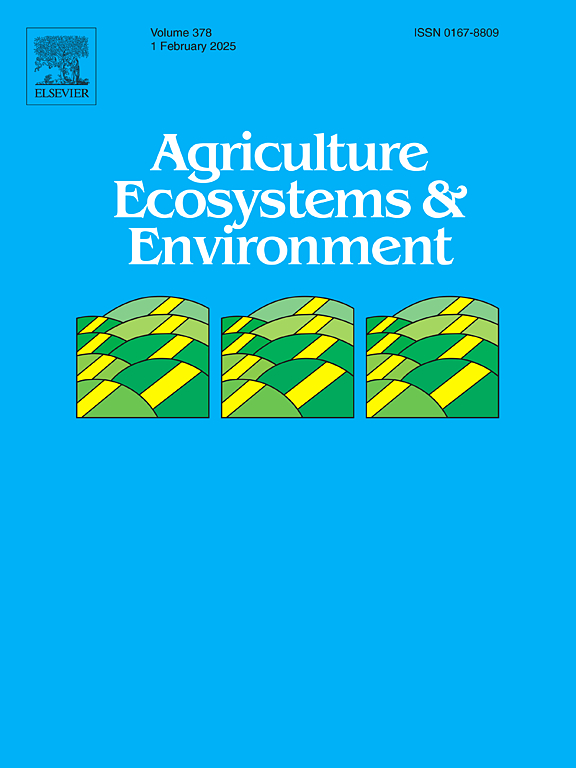Boosting carbon sequestration by using forage grass in tropical deep soil with no-tillage
IF 6.4
1区 农林科学
Q1 AGRICULTURE, MULTIDISCIPLINARY
引用次数: 0
Abstract
Soil is a significant reservoir of carbon (C), and soil management can lead to C release or sequestration. This 15-year study investigated the impact of intercropping on C dynamics during two growing seasons (2021/2022 and 2022/2023) of a soybean–maize succession system under long-term no-tillage. The treatments involved different crops intercropped with maize: no intercropping (fallow); ruzigrass; sunn hemp; and sunn hemp plus ruzigrass. Compared to no intercropping, intercropping ruzigrass enhanced C sequestration, resulting in a positive C balance (0.72 and 0.16 Mg ha−1 in the first and second evaluated seasons, respectively) and an average increase in C stocks (1-m depth) per growing season of ∼50 Mg ha⁻¹ . Conventional soil C assessments conforming to Intergovernmental Panel on Climate Change (IPCC) standards (up to 0.3 m depth) underestimated the total C stock by ∼64.9 %, revealing that these standards may not be suitable for accurately determining soil C stocks in tropical regions, particularly in deeper soil layers. These findings highlight not only the benefits of ruzigrass intercropping, emphasizing the role of cover crops in C sequestration and climate change mitigation, but also the limitations of conventional soil C assessments.
免耕热带深层土壤利用牧草促进碳固存
土壤是碳(C)的重要储存库,土壤管理可以导致碳的释放或封存。本研究研究了长期免耕大豆-玉米演替系统中间作对2021/2022和2022/2023两个生长季碳动态的影响。不同作物间作玉米处理:不间作(休耕);ruzigrass;跟麻;太阳麻加紫穗草。与不间作相比,间作紫穗草加强了碳的吸收,导致碳正平衡(第一个和第二个评估季节分别为0.72和0.16 Mg ha - 1),每个生长季节(1米深度)的碳储量平均增加约50 Mg ha -¹ 。符合政府间气候变化专门委员会(IPCC)标准(0.3 m深度)的传统土壤C评估低估了总C储量约64.9% %,表明这些标准可能不适合准确确定热带地区,特别是较深土层的土壤C储量。这些发现不仅突出了紫穗草间作的好处,强调了覆盖作物在碳固存和减缓气候变化方面的作用,而且还突出了传统土壤碳评估的局限性。
本文章由计算机程序翻译,如有差异,请以英文原文为准。
求助全文
约1分钟内获得全文
求助全文
来源期刊

Agriculture, Ecosystems & Environment
环境科学-环境科学
CiteScore
11.70
自引率
9.10%
发文量
392
审稿时长
26 days
期刊介绍:
Agriculture, Ecosystems and Environment publishes scientific articles dealing with the interface between agroecosystems and the natural environment, specifically how agriculture influences the environment and how changes in that environment impact agroecosystems. Preference is given to papers from experimental and observational research at the field, system or landscape level, from studies that enhance our understanding of processes using data-based biophysical modelling, and papers that bridge scientific disciplines and integrate knowledge. All papers should be placed in an international or wide comparative context.
 求助内容:
求助内容: 应助结果提醒方式:
应助结果提醒方式:


